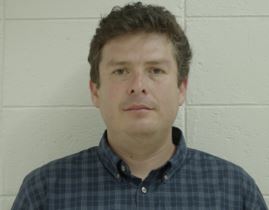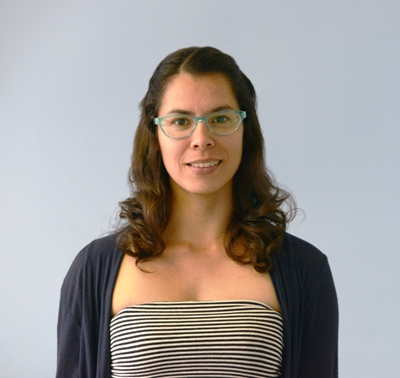Current Project: 2020-2023
RLA 7/025 – Strengthening Capacities in Marine and Coastal Environments Using Nuclear and Isotopic Techniques.
Previous Projects:
RLA 7/022 – Strengthening Regional Monitoring and Response for Sustainable Marine and Coastal Environments (ARCAL CXLV) (2018-2019).
RLA 7/020 - Establishing the Caribbean Observing Network for Ocean Acidification and its Impact on Harmful Algal Blooms, using Nuclear and Isotopic Techniques. (2014-2017)
RLA 7/014 – Designing and Implementing Systems for Early Warning and Evaluation of the Toxicity of Harmful Algal Blooms in the Caribbean Region, Applying Advanced Nuclear Techniques, Radioecotoxicological Evaluations and Bioassays (2009-2012).
RLA 7/012 – Use of Nuclear Techniques to Address the Management Problems of Coastal Zones in the Caribbean Region. (2007-2012)
Participating Institutions:
Universidad de Costa Rica





Research Areas:
- Ocean Acidification.
- Chemical Contamination.
- Harmful Algal Blooms (HABs) and Marine Biotoxins.
- Microplastic contamination.
THE PROBLEM
Climate change, pollution, harmful algal blooms (HABs or red tides). ocean acidification and microplastics are affecting our seas. Red tides have been observed in our country since 1975, and in the year 2000 they caused a national emergency with an approximate cost of 3 million dollars between hospital care and subsidies to fishermen.
On the other hand, in Costa Rica one kilogram of plastics/inhabitant/day is generated; various residues are recycled but much reaches the sea. Plastic particles, equal to or smaller than 5 mm, are known as microplastics. These can cause various problems to marine life and have even been found in the stomach of sardines in the Gulf of Nicoya. Globally, the ocean has become 30% more acidic in the last 200 years.
In Costa Rica, this increase in ocean acidity could result in the disappearance of coral reefs on both coasts and affect Pacific oyster farmers. There are currently four active oyster farms and this is expected to increase to 15 in the coming years, so ocean acidification would jeopardize the generation of approximately 700 new jobs.
INFORMATION FOR ACTION
The social and economic impact of the red tides forced the government to create a commission to control them. As a country, to avoid poisoning and negative effects on people's health, it is necessary to take preventive actions through the establishment, strengthening and sustainability of monitoring programs for harmful microalgae and toxins in fishery products.
Monitoring also provides baseline information on the presence of microplastics on beaches and the level of ocean acidity.
Country Members:
Álvaro Morales Ramírez. Biologist, Ph.D. Biological Oceanography.

Centro de Investigación en Ciencias del Mar y Limnología (CIMAR) y Escuela de Biología, Universidad de Costa Rica.
Role in the Project: Costa Rica National Coordinator.
Contact info: alvaro.morales@ucr.ac.cr / (506) 2511-2200 / 2203
Professor at the School of Biology and researcher at the Centro de Investigación en Ciencias del Mar y Limnología (CIMAR). Doctor in Natural Resources from the University of Kiel, Federal Republic of Germany; former director of the Postgraduate Programs in Biology and Integrated Management of Tropical Coastal Areas; former director of CIMAR; Former Dean of the Postgraduate Studies System. His area of specialty is Marine Planctology and he has also dedicated the last 25 years to the integrated management of the coastal zone. 75 indexed publications and 11 book chapters. National coordinator of the Ibero-American Network for Integrated Coastal Management (IBERMAR) since 2009, national and regional coordinator of the Cousteau Observatory for the Coasts and Seas of Central America (OCCA) 2012-2018, national coordinator of four regional projects of the International Energy Agency Atomic since 2009. 46 research projects, around 30 undergraduate and postgraduate students advised.
Jenny Asch. Marine Biology.

Sistema Nacional de Áreas de Conservación (SINAC), Ministerio del Ambiente y Energía de Costa Rica.
Role in the Project: Institutional Focal Point.
Contact info: jenny.asch@sinac.go.cr / (506) 8706-1871
Marine Biologist with an emphasis in Aquaculture from the Universidad Nacional de Costa Ric, with a specialty in Management and Conservation of Natural Resources from UNED. Coordinator of the Coastal Marine Program of the institution at the national level for 10 years, with a coordinating role internally and externally of SINAC with entities related to the conservation of coastal marine biodiversity, especially on issues related to conservation models as Protected Areas, marine spatial planning with a comprehensive vision of the landscape; in addition to providing advice and support to the SINAC and MINAE authorities on issues related to the biodiversity of marine resources.
Laura Brenes Alfaro. Sociologist, MSc. Evaluation of Development Programs and Projects.

Centro de Investigación en Contaminación Ambiental (CICA), Universidad de Costa Rica.
Role in the Project: Focal point of communication Costa Rica.
Contact info: lauramaria.brenes@ucr.ac.cr / (506) 2511-8209
Degree in Sociology, with a Master's Degree in Evaluation of Development Programs and Projects, both from the Universidad de Costa Rica. Researcher and coordinator of the Socio-environmental Research Unit of the Centro de Investigación en Contaminación Ambiental (CICA), of the Universidad de Costa Rica; coordinator of social action and research projects; and with experience in the development of communication strategies for projects with the International Atomic Energy Agency (IAEA).
Elian Conejo Rodríguez. Physicist, Ph.D. Geophysics.

Centro de Investigación en Ciencias Atómicas Nucleares y Moleculares (CICANUM) y la Escuela de Física, Universidad de Costa Rica.
Role in the Project: Collaborator.
Contact info: elian.conejo@ucr.ac.cr / (506) 2511-2421
He is currently the Director of the Centro de Investigación en Ciencias Atómicas Nucleares y Moleculares (CICANUM) of the Universidad de Costa Rica, he is also a professor at the School of Physics and a CICANUM Researcher. He obtained a postdoctoral position at the Institut de Physique du Globe de Paris, after his Ph.D. in Geophysics, Université Paris 7 Denis Diderot. He has extensive experience in the development of sensors based on photo-spectrometry for environmental applications. Knowledge of C++ programming, Matlab, Scilab, Octave, LabView and Comsol Multiphysics. Experience in modeling by the method of finite differences and finite elements for applications in transport phenomena and electromagnetism. Knowledge in the development of mass spectrometers.
Mario A. Cubero Campos. Physicist, Ph.D. Nuclear physics.

Centro de Investigación en Ciencias Atómicas Nucleares y Moleculares (CICANUM) y la Escuela de Física, Universidad de Costa Rica.
Role in the Project: Collaborator in the area of Applied Physics and nuclear analytical techniques.
Contact info: mario.cubero@ucr.ac.cr / (506) 2511-2422
Professor at the School of Physics and researcher at the Centro de Investigación en Ciencias Atómicas Nucleares y Moleculares (CICANUM) and School of Physics, Universidad de Costa Rica. Head of the Gamma Spectrometry and X-ray Fluorescence Laboratory. Coordinator of the Applied Nuclear Physics Section, School of Physics. He obtained a Ph.D. in Nuclear Physics from the Universidad de Complutense de Madrid, Spain. Postdoctoral fellow at the Universidade Federal Fluminense, Rio Janeiro, Brazil. Research experience in the Nuclear Physics group of the Institute for the Structure of Matter (IEM), Higher Council for Scientific Research (CSIC), Madrid, Spain. His specialty area is Experimental Nuclear Physics. Specializing in Halo Cores. He has participated in experiments at large facilities of CERN, TRIUMF, GANIL, CMAM-UAM, ITN-Lisboa, LaboratórioAberto-USP, MAGNEX-LNFN. Experience in experimental design, analysis and simulation of nuclear reactions, specializing in high resolution halo, charged particle and gamma nuclei.
Eddy H. Gómez Ramírez. Chemist, MSc. Oceanography. PhD. Sea science.

Centro de Investigación en Ciencias Atómicas Nucleares y Moleculares (CICANUM) y la Escuela de Física, Universidad de Costa Rica.
Role in the Project: Collaborator in the area of nutrient dynamics in the study areas.
Contact info: eddy.gomez@ucr.ac.cr / (506) 2511-2215
Coordinator of the Chemical Oceanography Laboratory of the Centro de Investigación en Ciencias del Mar y Limnología (CIMAR) where he collaborates as a researcher.
Doctor in Marine Sciences from the Universidad de Cádiz, Spain.
Bachelor and graduate in Chemistry from the Universidad de Costa Rica.
Master in Oceanography from the Universidad de Cádiz, Spain.
Juan Guillermo Sagot Valverde. Chemical laboratory technician.

Laboratorio de Oceanografía Química, Centro de Investigación en Ciencias del Mar y Limnología (CIMAR), Universidad de Costa Rica.
Role in the Project: In charge of the microplastics component. Technical collaborator of the ocean acidification component.
Contact info: juan.sagot@ucr.ac.cr / (506) 2511-2220
In charge of the Chemical Oceanography Laboratory of CIMAR. Assistance in the formulation and execution of research projects on: water quality, ocean acidification, seagrasses and microplastics. Physicochemical analysis of nutrients, suspended materials, chlorophylls, alkalinity, pH and microplastics. Development of analytical methodologies for the determination of nutrients in water, seagrass and sediments. Train undergraduate, graduate and secondary students, external staff, researchers and the general public in good laboratory practices for environmental chemical analysis and sample collection. Training, awareness and information talks about the effects caused by microplastics in the environment, as well as the analytical methodology to carry out sampling. Dissemination and environmental awareness on the issues of marine litter and microplastics through radio, television, written and virtual media programs.
Celeste Sánchez Noguera. Biologist, MSc. Integrated Management of Tropical Coastal Areas, PhD. Earth System Sciences.

Centro de Investigación en Ciencias del Mar y Limnología (CIMAR), Universidad de Costa Rica.
Role in the Project: In charge of the ocean acidification component.
Contact info: celeste.sancheznoguera@ucr.ac.cr / (506) 2511-2222
Researcher at the Centro de Investigación en Ciencias del Mar y Limnología (CIMAR). Master in Integrated Management of Tropical Coastal Areas (Universidad de Costa Rica) and PhD in Earth System Sciences (“Earth System Sciences”, University of Hamburg, Federal Republic of Germany).
Maribel Vargas Montero. Marine Biologist, MSc. Integrated Management of Tropical Coastal Areas.

Directora e investigadora del Centro de Investigación en Estructuras Microscópicas (CIEMic); profesora asociada de la Facultad de Microbiología, Universidad de Costa Rica.
Role in the Project: Collaborator in the area of harmful algal blooms.
Contact info: maribelle.vargas@ucr.ac.cr / (506) 2511-2342
Bachelor’s Degree in Marine Biology with an emphasis in Aquaculture from the Universidad Nacional de Costa Rica, with an Academic Master's Degree in Integrated Management of Tropical Coastal Areas from the Universidad de Costa Rica. Specialist in Electron Microscopy and current Director of the Center for Research in Microscopic Structures. Only Costa Rican person internationally certified in the identification of toxic marine microalgae at the University of Copenhagen, Denmark. Likewise, she has been trained in techniques and project planning for the identification of harmful marine phytoplankton at the University of Tokyo, in Vigo-Spain, in Mexico and in the United States. She is currently the representative of the UCR in the Commission for the prevention and control of the red tide in Costa Rica. She is a focal point in the ANCA-IOCARIBE harmful algae working group. She has experience in more than 20 research projects in the area of marine phytoplankton and has more than 30 scientific publications in indexed journals.
Progress and Challenges
It is necessary to establish monitoring programs for beaches and fishing resources in relation to contamination by microplastics in coastal areas, with the aim of collecting baseline information and generating evidence-based health policies.
